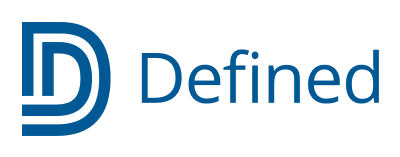Educators Blog
Performance Tasks or Projects? Complementary Approaches for Student Engagement
By Jay McTighe and John Larmer,
Both experiences can result in meaningful learning — but they aren’t created equal.
The terms “performance tasks” and “projects,” in the context of project-based learning (PBL), are familiar to today’s educators. Like fraternal siblings, they share many common qualities, yet they are not identical twins. Eight key dimensions can help underscore the differences and similarities between performance tasks and projects, so educators know how to use each of them appropriately. We believe that shorter, more structured performance tasks can naturally serve as stepping stones to more comprehensive project-based learning.
In essence, a performance task asks students to apply their learning in some fashion. More specifically, a performance task is “any learning activity or assessment that asks students to construct a multi-faceted response, create a product, or produce a demonstration” (McTighe, Doubet, & Carbaugh, 2020). In project-based learning, a “project” is a more in-depth learning experience — referring to the whole process, not just the final product. A project provides the motivation, the framework, and the actions required to complete the learning.
Performance Task or Project?
To better understand the relationship — and the distinctions — between tasks and projects, let’s look at a few scenarios. Would you call each of the following a performance task or a project?
- Students play the role of community garden planners in a city. They calculate lot and plot sizes and amounts of soil needed, create a site map, and consider water and fertilizer needs for various plants that could be grown. They create a flyer and a presentation that would be appropriate for an audience of community members. (Source: Defined Learning)
- Students read three fairy tales that all have the same general pattern. They are asked to write a story that includes all the characteristics, and general pattern, of a fairy tale. They then read their story to a kindergarten reading buddy and teach him/her about the characteristics and general pattern of a fairy tale. (Source: Marzano, Pickering, McTighe, 1993)
- Students investigate the question, “Why is it important to tell untold stories of the American Revolution?” by considering what stories are commonly told and why. Then, they study less-commonly told stories about the “people’s rebellion” in Massachusetts in 1774 and the role of women, African Americans, and Native Americans in the Revolution. They create podcasts telling an untold story and share them with an audience at a publishing event. (Source: Educurious 2021)
- Students act as a consumer advocates researchers who have been asked to evaluate the claim by the Pooper Scooper Kitty Litter Company that their litter is 40% more absorbent than other brands. Students develop a plan for conducting the investigation that must be specific enough so that the lab investigators could follow it to evaluate the claim. (Source: McTighe, 2021)
The correct answer for each scenario isn’t always obvious. Rather than trying to pigeonhole any example into an either-or category, we propose that performance tasks and projects can be more fruitfully examined according to a set of dimensions along a continuum (McTighe, Doubet, & Carbaugh, 2020). Then, we can profile any performance task or project according to where it falls along the scale of the dimensions.
Eight Dimensions for Profiling “Performance Tasks” and “Projects”
1. Time Frame
How long will students be involved in this task or project (including time for presentations and evaluations)?
| 2-4 class periods | 5-10 class periods | more than 2 weeks |
Generally speaking, a performance task is of shorter duration and less complex than a project. However, tasks and projects may not always be too far apart. For example, some performance tasks may take several days, and some projects may take two weeks.
2. Degree of Authenticity
To what extent is the task authentic (realistic challenge or issue, genuine product/performance, authentic audience, real-world constraints)?
| inauthentic/decontextualized | simulates an authentic context | totally authentic |
Performance tasks may involve “higher-order” thinking and transfer application, yet not be particularly authentic to the world beyond the classroom. Often, performance tasks simulate an authentic context in that they set up a realistic situation, role, and/or audience. Some PBL projects may also be simulations, but most tend to be more authentic as students tackle genuine issues and produce authentic products/performances for a real audience.
3. Integration of Subjects
To what extent is the task interdisciplinary?
| single discipline | integrates two subjects | multi-disciplinary |
Performance tasks are often focused on a single subject, although tasks in science and social studies often include a “communications” component (e.g., written, oral, multimedia, or visual), and thus may be considered interdisciplinary. Since project-based learning typically focuses on authentic issues, it is far more likely that projects will involve multiple disciplines.
4. Direction
Who will direct the task or project?
| teacher-directed? | teachers with some student self-direction? | student-directed? |
A typical performance task specifies exactly what students need to do. Even “open-ended” tasks are nonetheless directed, and the students simply respond to a prompt. Project-based learning, on the other hand, often requires students to direct some (or most) of the project. Students may be the ones to identify a need, an issue, or a problem that serves as the launchpad for the project.
5. Extent of teacher support
To what extent will students receive support from a teacher?
| no support | some support | extensive support |
Performance tasks may be used for assessment purposes, in which case the teacher is not supposed to provide support other than orienting students. Performance tasks may also be used for instructional purposes, in which case teachers may provide some support, in the form of monitoring, feedback, and facilitation. This is true for some types of independent student projects, too. For a more complex performance task and often in PBL, students may receive extensive support from the teacher, such as team formation and management, coaching the inquiry process, conducting lessons and activities, providing resources, and offering ongoing feedback via formative assessments.
6. Student Choice
To what extent will students have choices regarding any of the following:
- Task topic, problem, issue?
- Product(s)/performance(s)?
- Audience(s)?
- How and with whom they work?
| no choice | some choices | extensive choices |
Some performance tasks simply specify what students need to do without allowing any choice, whereas others will include opportunities for students to choose things like the target audience or final product. Projects tend to be more open-ended and longer-term, thus enabling more choices along the way in addition to the final product(s)/ performance(s).
7. Performance Mode
How will students work?
| individually | some group & some individual work | all work done collaboratively |
Performance tasks are often presented as assignments or assessments intended for individual students. However, some tasks may include a component in which students work with a partner or small group. It is much more likely that projects will require teamwork, and that the students will be assessed on how well they work in groups, in addition to being evaluated on the quality of their culminating product(s) or performance(s).
8. Evaluation of Student Product(s)/Performance(s)
Who will be involved in evaluating student products and performances?
| classroom teacher only | team of teachers | external evaluators/experts |
When performance tasks are used for assessment, the classroom teacher generally evaluates the students’ performances based on a set of criteria or scoring rubric(s). On occasion, a team of teachers will work together (e.g., in a professional learning community) to evaluate students’ performance on a common task. In contrast, one of the hallmarks of PBL is that students are often evaluated by others, such as fellow students, community members, and/or by a panel of adults that may include experts in the field.
Qualities of Effective Performance Tasks and Projects
Regardless of where they fall along the continuum, quality tasks and projects need to meet certain qualities to make sure that the juice is worth the squeeze. Figure 1 presents criteria for a well-designed performance task (McTighe, 2020), and Figure 2 lists the six attributes that students should experience in a quality PBL project (Framework for High-Quality Project-Based Learning). You’ll notice similarities.
Figure 1 – Performance Task Criteria
-
The task aligns with targeted standard(s)/outcome(s) and one or more of the 4 C’s – critical thinking, creativity, communication, and collaboration.
-
The task calls for understanding and transfer, not simply recall or a formulaic response.
-
The task requires extended thinking and habits of mind — not just an answer.
-
The task is set in an “authentic” context; i.e., it includes a realistic purpose, a target audience, and genuine constraints.
-
The task includes criteria/rubric(s) targeting distinct traits of understanding and transfer; i.e., criteria do not simply focus on surface features of a product or performance.
-
The task directions for students are clear.
-
The task will be feasible to implement.
Optional:
-
The task allows students to demonstrate their understanding/ proficiency with some appropriate choice/variety (e.g., of products or performances).
-
The task effectively integrates two or more subject areas.
-
The task incorporates appropriate use of technology.
Figure 2 – High-Quality PBL Criteria
-
Intellectual Challenge and Accomplishment: Students learn deeply, think critically, and strive for excellence.
-
Authenticity: Students work on projects that are meaningful and relevant to their culture, their lives, and their future.
-
Public Product: Students’ work is publicly displayed, discussed, and critiqued.
-
Collaboration: Students collaborate with other students in person or online and/or receive guidance from adult mentors and experts.
-
Project Management: Students use a project management process that enables them to proceed effectively from project initiation to completion.
-
Reflection: Students reflect on their work and their learning throughout the project.
The Stepping Stones Students Need
Let’s return to the rhetorical question: Is this a performance task or project? Indeed, there are often shades of grey along the eight dimensions’ continuums, and there is no “right” answer to where a task or project should fall. The choices suggested by the eight dimensions should take into account other considerations, including:
-
The learning goals —content standards in academic disciplines, competencies identified in a Portrait of a Graduate, habits of mind found in a mission statement.
-
Age and experience of the learners.
-
Organizational factors — available time, schedules for both students and teachers,
availability of resources.
- The experience levels of teachers in facilitating tasks and PBL.
References
- Buck Institute for Education. (2017). Framework for high-quality project-based learning. Defined Learning (2018). Performance task: Community garden coordinator. Educurious. (2021). Project America: Untold stories of the revolution. Course.
Marzano, R. J., Pickering McTighe - Alexandria, VA: ASCD. p. 56 McTighe, J., Doubet, K. & Carbaugh, E. (2020). Designing Authentic Performance Tasks and
- Projects: Tools for Meaningful Learning and Assessment. Alexandria, VA: ASCD. p 12.
- McTighe, J. (2021). Developing authentic performance tasks. Performance task examples provided in a workshop handout.
About the Authors:
Jay McTighe brings a wealth of experience developed during a rich and varied career in education. He served as a teacher, administrator, program coordinator, and director of the Maryland Assessment Consortium, a state collaboration of school districts working together to develop and share formative performance assessments. McTighe is an accomplished author, having co-authored over 18 books, including the award-winning and best-selling Understanding by Design® series with Grant Wiggins. His books have been translated into 14 languages. He has also written more than 50 articles and book chapters, and has been published in leading journals, including Educational Leadership®.
John Larmer is a project-based learning expert. In his 20 years at the Buck Institute for Education/PBLWorks, he co-developed the model for Gold Standard PBL, authored several books and many blog posts, and contributed to curriculum and professional development.
Subscribe to the #1 PBL Blog!
Receive new articles in the world of Project Based Learning, STEM/STEAM, and College & Career Readiness.

